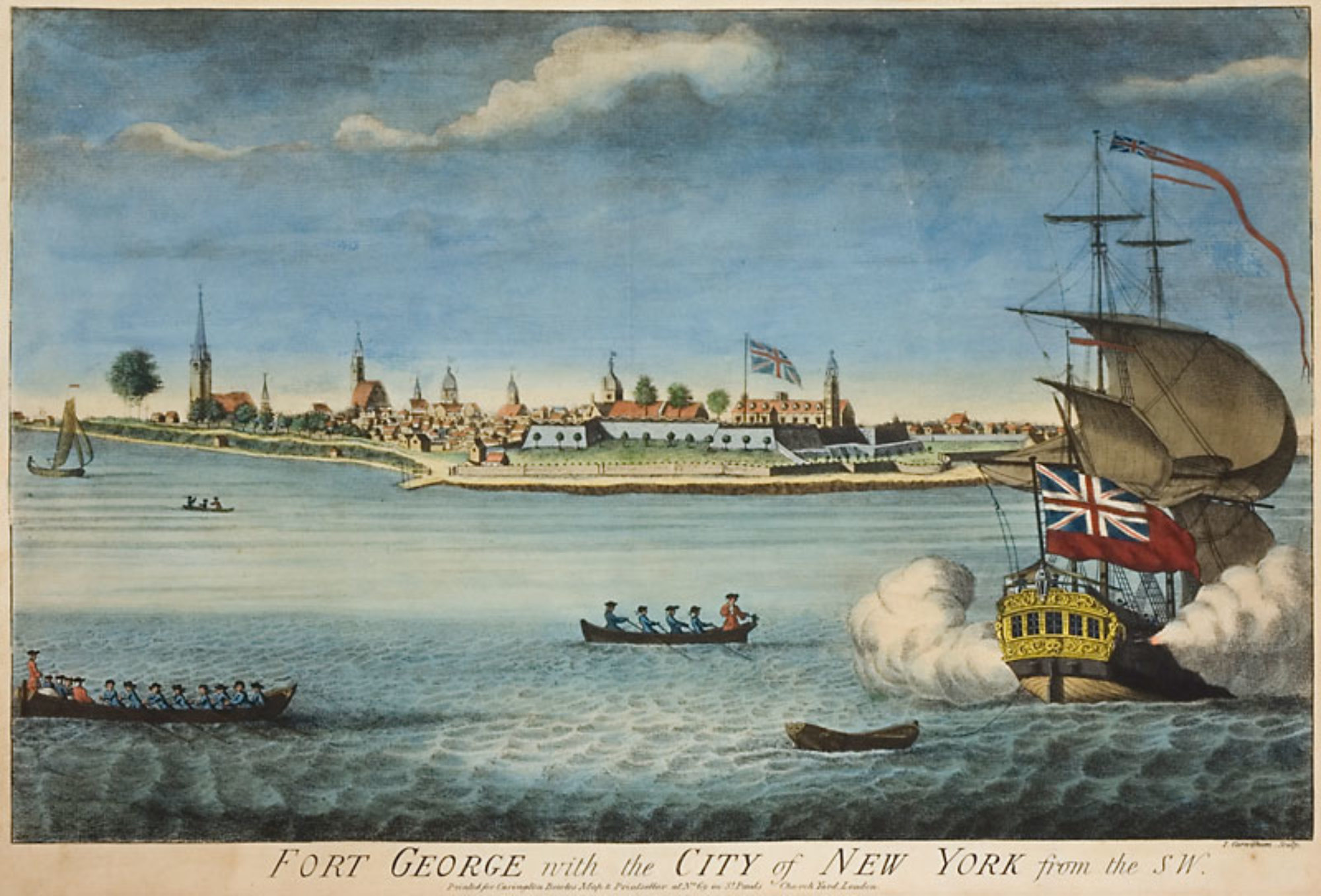
Lookout Place or Fort Hill, formerly known as Crocheron’s Hill was a Revolutionary War British garrison, or earthen mound-fortress, about fifty feet square at the top of what is currently named LaTourette Hill near Historic Richmondtown, Staten Island, New York. The fort overlooked the Old Mill Road, Fresh Kills, or Richmond (Saw Mill) Creek, the Church of St. Andrew (est. 1713) and the town of Richmond, then referred to as Cuckoldstown, in the valley just below the Hill. The redoubt was constructed in 1776 by British Regulars during the occupation of Richmond County. General William Howe planned his successful capture of New York City while encamped on the Island, along with 30,000 British and Hessian soldiers joining him after the arrival of his brother, Admiral Richard Howe.

The Hill was named after an old Staten Island family that settled the land in the 1700s, and was still in the Crocheron family until 1845. The Holmes farm was north of the fort. There is a spring running nearby supplying the town and the encampment with fresh water, and is now locally known as “The Howe Spring,” or “The Hessian Spring.” The hilltop was widely denuded of trees by the British during the war, allowing the soldiers to have unobstructed views of Lower New York Bay and the Arthur Kill. To the northeast and northwest of the fort was a flat, scrubby plateau, probably used as the British army’s parade ground. The northeast ramparts were about six feet high with an entrance at the northeast corner. The southwest sides were almost level with the ground, possibly for the placement of artillery.

To the northeast of the fort, archeological digs uncovered a deep pit that more than likely served as a magazine (store for ammunition).
Other extensive digs had taken place at the turn of the 19th century, revealing all manner of British accoutrement, from remnants of weaponry to soldier coat buttons, shoe buckles and pottery fragments. Not too far from this pit was found what was eventually revealed to be a camp rubbish heap filled with military debris. Oyster and clam shells were found in abundance, as well as animal bones, window glass, nails and crockery. Other items turned up, including two fine lead pencils, eight bullets, a gun flint and a pair of scissors.
The first British military item found was a button of the Twenty-second Regiment of Foot (see photo below left). Eight more buttons of the Twenty-second, one of the Forty-second Royal Highlanders and two “R.P.” or Royal Provincials were also found. More uniform buttons were found from the First American Regiment (see photo below right), Forty-seventh, Thirty-third, Forty-forth and the Thirty-seventh (see photo below center) just below on the bank of the slope.




Other military buttons included The King’s Own (4th Regiment of Foot) (see illustration below left), the Forty-sixth and the Fifty-fifth, all of whom engaged in the landing at Gravesend bay, in Brooklyn at the commencement of the Battle of Long Island. One of the more noteworthy military units was Robert Rogers’ newly-organized Queen’s Rangers while encamped at Richmond, named after Charlotte, wife of King George III. It grew to 937 officers and men organized into eleven companies of about thirty men each and an additional five troops of cavalry. Rogers did not prove successful in this command and he left the unit on January 29, 1777.
On October 15, 1777, John Graves Simcoe was given command. Simcoe’s headquarters is believed to have been the Holmes farmhouse just north of the fort. Under his command, he transformed the Queen’s Rangers into one of the most successful British regiments during the war.
The encampment at Crocheron’s Hill is one of the two major camps at Staten Island, the other being Fort Hill, above the Watering Place (another natural spring) on the North shore, primarily used as a hospital and infirmary for the sick and wounded, under the command of Lt. Col. Dalrymple (Hessian soldiers have written about their stay at this hospital), but officers and privates were quartered throughout the Island in private homes, farmhouses and barns for most of the war. The Church of St Andrew’s glebe (land owned by the Church of England) at the time of the revolution included the cemetery along the Richmond creek and a large track of about 350 acres along the Kill Van Kull near Port Richmond.





You must be logged in to post a comment.